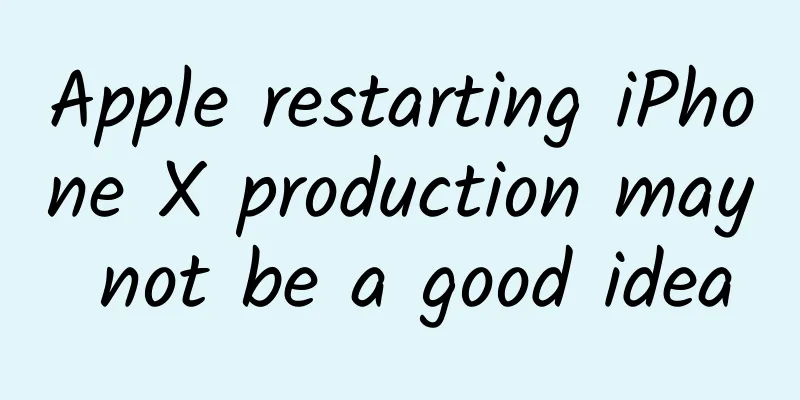How to choose between React Native and Flutter?

|
In the field of mobile application development, React Native and Flutter are the two most popular cross-platform development frameworks in recent years. They have won the favor of a large number of developers with their high efficiency, speed and flexibility. So, what are the similarities and differences between them, and how should we choose? This article will compare React Native and Flutter, two popular mobile application development frameworks. picture Development History
If we compare the two to cars, then React Native is like a hybrid car that combines classic internal combustion engine technology with modern electric technology, and is driven by the veteran JavaScript, while Flutter is more like a brand new electric sports car, equipped with the cutting-edge Dart programming language, a high-performance engine, designed to provide developers with an unprecedented control experience. From the perspective of development history, if you prefer to choose a framework with a longer history and more mature community support, React Native is a good choice. But if you are willing to try some emerging technologies that may have more room for development in the future, then you can choose Flutter. picture programming language
It’s like React Native uses instruments that everyone is familiar with, while Flutter tries to play with new instruments. If the team is already familiar with JavaScript, React Native will be easier to use; but if the team is willing to accept new challenges and pursue better performance, learning the Dart language may also be a good investment for the future, so Flutter can be chosen. Technical features
Imagine that React Native is like a chef who prepares dishes using ingredients bought at the market, whereas Flutter is like a self-sufficient farmer who grows and prepares almost everything himself. If you need to produce something quickly and need to frequently call native functions in your project, then choose React Native. If you are looking for consistent high performance and a cool UI, then Flutter is more suitable. Scalability
Just like you are building Lego, React Native Lego blocks can be mixed and matched with blocks from other brands; while Flutter Lego blocks may require special accessories to be built. If a large number of custom native modules are required in the project, React Native provides more flexible expansion capabilities. However, if you tend to create many custom UI components and are willing to explore all the possibilities of Flutter, then Flutter is a better choice. Performance comparison
If performance is the speed of a sports car, React Native is like the speed of a car on an urban road, which is enough most of the time and you need to step on the accelerator occasionally; Flutter is like a sports car on a highway, which is usually faster and smoother. If the application relies on smooth animations and complex user interactions, Flutter provides higher performance and a smoother user experience. For projects that do not require particularly high performance, React Native is sufficient. Development ToolsFrom the perspective of development tools, React Native and Flutter both have their own IDE support and command line tools, allowing developers to efficiently create, test, and deploy applications. React Native Development Tools:
Flutter development tools:
If you are a web front-end developer who prefers to use VS Code or WebStorm and wants to leverage the existing JavaScript toolchain, then React Native may be more suitable for you. Expo provides a very friendly entry experience, especially for developers who do not want to delve into the details of native development. If you have high requirements for performance analysis and UI debugging, or are willing to try Android Studio as a development environment, Flutter may be a better choice. Dart DevTools provides in-depth performance analysis tools, which is very valuable for developers who want to optimize their applications. Maintenance costs
If you are a landlord, React Native is like an old house that needs regular inspection and maintenance; while Flutter is like a newly built house that is easier to maintain. For long-term projects, Flutter may have an advantage in terms of maintenance costs because its components and tool chains are more unified, while React Native may require more frequent synchronization and upgrades of dependencies. Documentation quality
Imagine if you were assembling furniture, the instructions for React Native might have several pages from the previous version, while the instructions for Flutter are the latest and every step is written very clearly. If you are the kind of developer who likes detailed documentation as a guide, Flutter's documentation may give you a better experience. Although React Native's documentation is comprehensive, it is sometimes not updated in a timely manner. Community Ecology
It's like React Native is a mature old town with stable facilities and services; Flutter is a newly developed community, which is still under construction in some places but full of vitality and potential. If you need access to a large number of third-party libraries and community support during development, React Native is a safer choice. However, if you are willing to be part of a fast-growing community and have no special requirements for the libraries you must use, Flutter is also a good choice. picture When choosing between React Native and Flutter, you need to consider their pros and cons, your project requirements, your team’s skills and experience, and your expectations for future development. If you are a web developer, good at Javascript, and have a tight project deadline, and need a mature, stable framework with broad community support, React Native can help you deliver quickly. But if you pursue extreme performance and first-class UI, and are willing to invest time and resources, then Flutter may be more suitable for you. Finally, whether you choose React Native or Flutter, it is important to find the technology that best suits your current project and team. Each framework has its own strengths and limitations, just like finding a pair of shoes that best fits your feet. Comfort and fit are the most important. |
<<: Why is Hongmeng competing with iOS instead of Android?
>>: iOS 17.4 update, added battery cycle count!
Recommend
How to do it in the community? Selling community, get 2000+ accurate users with 0 budget!
With the advent of the 5G era, there are more and...
Amazing! My astronomy knowledge has increased! | Issue 25
Facing the unknown universe, Human beings are alw...
Eating less sugar can really prevent cancer!
This article was reviewed by Dr. Guo Xiaoqiang, a...
What should a bidder do? Summary of bidding skills
I believe that 90% of the viewers who clicked in ...
One picture to understand|A full moon story of a "business trip" in space
October 16, 2021 00:23 Shenzhou 13 manned spacecr...
Talk about the hidden rules of App operation
First, let’s deconstruct the position of App Oper...
Feel like your brain isn't working anymore? Here are 11 brain-boosting foods →
In the pursuit of a healthy life, we are increasi...
Zhu Guomiao postpartum recovery
Zhu Guomiao's postpartum rehabilitation resou...
The location of Wenchang Tower before the exam
Many parents are very concerned about their child...
How to establish a data analysis logic system for information flow advertising?
I believe everyone is familiar with information f...
Marketing calendar for July 2020
2020 is already halfway through. I looked at the ...
How to attract attention through short video operations?
Anyone who has done a little research on short vi...
Why do I hate Safari so much right now?
If there is one thing that developers hate the mo...
Lisa was sued by US stock investors and laid off 18% of her employees. Ideal's recent situation is not so "ideal".
Do you remember the Ideal MEGA incident some time...









